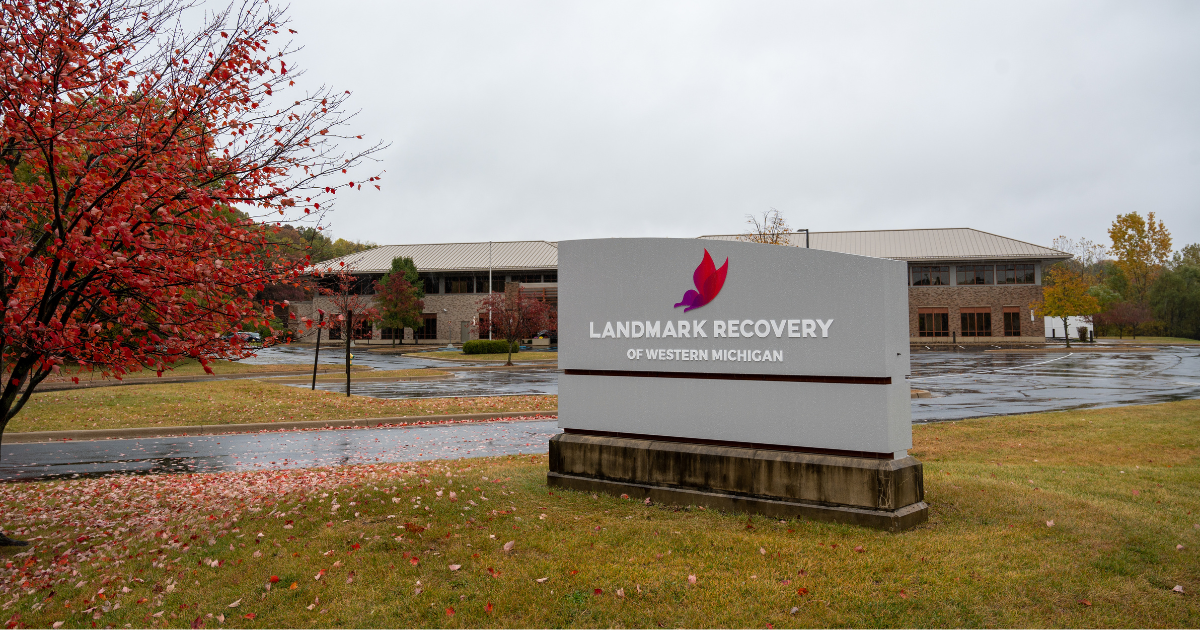Updated: June, 12, 2023, at 4:02 p.m.
Fear of the pain and discomfort often experienced during opioid withdrawal can prevent people from seeking help for opioid addiction. The continued physical symptoms of opioid withdrawal can trigger relapse in those who seek assistance, ultimately hindering their chances of overcoming addiction. Although methadone is commonly used to help people suffering from opioid addiction get through drug detox, there are many viable alternatives to this medication that should be considered.
Methadone clinics have come under recent scrutiny. Lawmakers are debating where methadone clinics should be allowed, how methadone should be administered, and how effective the medication is in treating opioid addiction.
There is growing evidence that medication-assisted treatment (MAT) for opioid addiction is most successful when it’s combined with therapy and counseling. Landmark Recovery provides an alternative to methadone through an outpatient rehab program where patients are not only prescribed medication to help them detox from opioids but also understand the root causes of addiction.
What is Methadone in Detox?

Cup of methadone in detox
Methadone is a synthetic opioid agonist medication that interacts with the same cell receptors as other opioids (such as heroin, morphine, and opioid pain medications like codeine, oxycodone, and hydrocodone). Methadone stays bound to these opioid receptors for an extended period of time, delaying the withdrawal symptoms that individuals experience from taking short-acting opioids, like heroin, morphine or oxycodone and allowing adequate time for detox. Essentially, methadone changes how the brain and nervous system respond to pain, blocking the euphoric effects of more harmful opioids. It is administered as a pill, liquid, or as wafer and given to patients once a day. One dose of methadone can provide pain relief for up to eight hours in most people.
What is methadone used for?
Methadone is prescribed as a replacement for heroin and other opioids and is used to help people recover from opioid addiction. When used at the proper dose, methadone lessens the painful symptoms of opioid withdrawal, blocks the euphoric effects of other opioid drugs, and reduces drug cravings. People with an opioid dependence who are treated with methadone do not experience a high and have a markedly reduced desire to use opioids. These individuals are also more likely to engage in counseling and other behavioral interventions that are essential to recovery.
Is methadone an opioid?
Methadone is an opioid drug, however, its use as a treatment for opioid dependence should not be viewed as the substitution of one addictive drug for another. Although methadone occupies and activates opioid receptors, it does so more slowly than other opioid drugs. As a result, methadone is able to effectively block the effects of shorter-acting opioids. Methadone has also been legally available as a clinically-administered drug in the US since 1947.
Is methadone in detox safe?
Methadone has a long history of use and is safe and effective when taken as prescribed. However, like other opioid drugs, methadone is a central nervous system depressant. If taken at high doses, used more frequently than prescribed, or combined with alcohol or other depressant drugs, it has the potential to reduce (or even stop) essential body functions like breathing.
What are Methadone Clinics?
By law, methadone can only be dispensed through an opioid treatment program (OTP) certified by the Substance Abuse and Mental Health Services Administration (SAMHSA). Locations that have been established for the dispensing of methadone used in the treatment of opioid dependence are often referred to as methadone clinics. All methadone clinics in the United States are strictly regulated by state and federal laws.
Methadone clinics can be public or private. While free methadone clinics do exist, many also offer payment plans and other payment options. According to preliminary cost estimates from the U.S. Department of Defense, daily visits to a methadone clinic for treatment costs approximately $126.00 per week or $6,552.00 per year.
What Are the Side Effects, Risks, and Drawbacks of Methadone?
Methadone produces many adverse side effects that may include:
- Abdominal pain
- Constipation
- Sweating
- Dizziness
- Vision problems
- Extreme drowsiness
- Difficulty breathing
- Decreased sexual desire
- Nausea
- Vomiting
- Restlessness
- Itchy skin
- Hallucinations or confusion
- Irregular heartbeat and other heart problems
Methadone is a full opioid agonist and overdose-related deaths (mostly caused by respiratory depression) are a significant concern. Methadone should be avoided if alcohol or other central nervous system depressants have been consumed, as the combination of these substances can be life-threatening.
Because methadone is an opioid, the user is at risk for developing a dependence on the drug. Even if a patient feels that they are ready to stop methadone treatment, it must be stopped gradually to prevent withdrawal.
How Long Does Methadone Stay in Your System?
Methadone is a long-lasting opioid drug that produces clinical effects lasting up to 72 hours. Even after the effects of methadone wear off, the drug’s active ingredients remain in the body for much longer. If another methadone dose is taken too soon, a fatal overdose can occur. Methadone should always be taken at the times prescribed, and you should never use more than the specified amount, even if you miss a dose or feel like it is not working.
What are the Alternatives to Methadone in Detox?
There are several alternatives to methadone that, for many people, provide a better option for detoxing from opioid drugs. Landmark Recovery offers medication-assisted treatment for opioid addiction using buprenorphine or suboxone, which many physicians believe could be safer and more effective than methadone. We also provide personalized therapy and counseling to help treat the root causes of addiction.
Buprenorphine
Buprenorphine is a synthetic opioid medication that eliminates withdrawal symptoms and relieves drug cravings by acting on the same opioid receptors in the brain that other opioid drugs activate. Unlike methadone, buprenorphine acts as a partial agonist at opioid receptors. Therefore, while it does not produce the euphoria and sedation caused by heroin or other opioids, it is still able to reduce or eliminate withdrawal symptoms associated with opioid dependence and carries a low risk of overdose.
Buprenorphine has a number of advantages over methadone for use in detox as an opioid replacement therapy:
- Due to its low activity at opioid receptors, buprenorphine causes less respiratory depression than methadone and has a lower overdose risk.
- Anecdotal evidence shows that recipients of buprenorphine often complain about missing the “high” of methadone.
- Buprenorphine treatment for detox can be provided in office-based settings by qualified physicians, eliminating the need to visit specialized treatment clinics.
- On average, buprenorphine treatment requires twice-weekly visits, a more convenient schedule compared to the daily visits needed for methadone treatment.
Suboxone
Suboxone is a commonly prescribed medication that is a combination of buprenorphine and naloxone, an opioid antagonist (blocks the activation of opioid receptors) that is used as an antidote to opioid overdose. Suboxone helps alleviate and potentially eliminate withdrawal symptoms when detoxing from short-acting opioids such as heroin and prescription painkillers.
Methadone vs. Suboxone
Naloxone has no effect when suboxone is taken as prescribed, but if an individual attempts to inject suboxone, the naloxone will produce severe withdrawal symptoms. This property of suboxone makes it preferable over methadone because it decreases the likelihood that the medication will be abused or diverted to others.
Clonidine
The antihypertensive drug clonidine can be used during opioid detox to shorten the withdrawal time and relieve physical symptoms such as sweating, diarrhea, vomiting, abdominal cramps, chills, anxiety, insomnia, and tremor. Clonidine does not effectively treat all symptoms of opioid withdrawal, however, and adjunctive medications may be needed to treat symptoms such as insomnia, muscle aches, and cravings.
There are some advantages of clonidine over methadone in the treatment of opioid withdrawal:
- Because it is not an opioid, clonidine is able to relieve most opioid withdrawal symptoms without the possibility of producing opioid intoxication or drug reward.
- Clonidine is classified as having no abuse potential, according to the FDA.
- No special licensing is required for the dispensing of clonidine.
- Detox with clonidine can usually be completed within 2 to 3 weeks. Methadone, on the other hand, must be tapered gradually, making the detox process much longer.
Lofexidine
Lofexidine is the first non-opioid treatment approved by the FDA for the management of opioid withdrawal symptoms. This high blood pressure medication can be used for up to 14 days to help ease symptoms for a rapid detox.
Codeine phosphate
Codeine phosphate is an opioid drug that alleviates opioid withdrawal symptoms and reduces cravings.
Detoxing from Methadone Addiction or Methadone in a Clinical Setting
A major concern of methadone is that people can become addicted to methadone as they use it to wean themselves off another opioid drug. These individuals will then experience painful withdrawal symptoms when they stop taking the medication. Methadone withdrawal typically begins 36 to 48 hours after the last dose, peaks after about 3 days, and gradually subsides over a period of 3 weeks or longer. Detoxing from methadone must be done gradually to avoid withdrawal. As a result, methadone detox is a much longer process compared to detox for shorter-acting opioids like heroin.
Learn More About Methadone in Detox and How We Can Help You
Looking for opioid addiction treatment? Landmark Recovery makes use of our own methods for treatment, unlike many methadone clinics. However, our treatment is even more effective due to treating patients from the moment they walk through our doors to the moment they graduate into recovery. To learn more about how we can help you overcome addiction, call our admissions team today at 888-448-0302. Visit our locations page to find an opioid addiction treatment center near you.

Choose Recovery Over Addiction
We're here 24/7 to help you get the care you need to live life on your terms, without drugs or alcohol. Talk to our recovery specialists today and learn about our integrated treatment programs.




